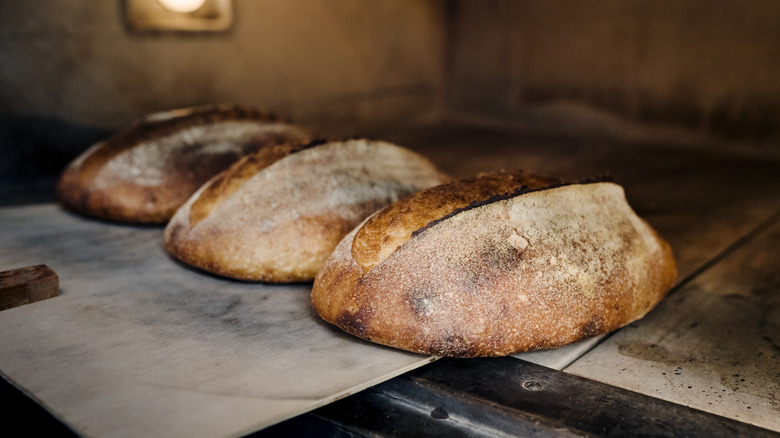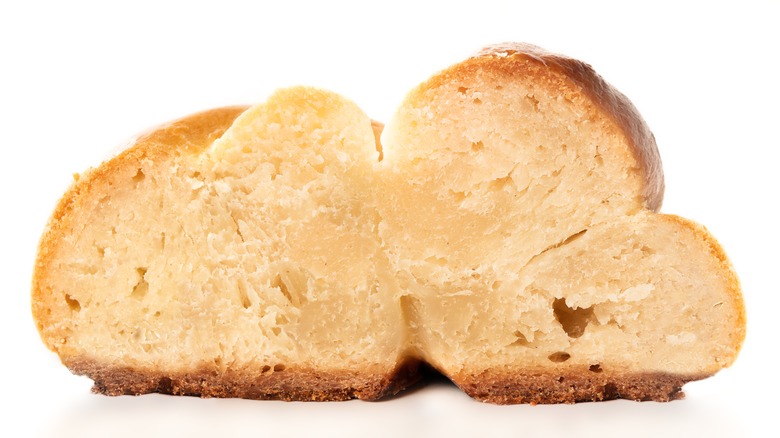How Cooling Can Change Bread's Structure And Texture
Since the early days of the COVID-19 pandemic, people have become increasingly interested in hacks for baking bread. Hey, we get it. Fresh bread makes us feel warm and comforted, but it can also be a pain to get right.
Consequently, one thing to keep in mind as you're making bread — particularly as you remove the bread from your oven — is the importance of temperature. While baking in the oven, where temperatures are high, the starches in your bread swell with moisture. Once removed from the oven, lower temperatures cause those same starches to stiffen and the moisture to evaporate, giving the bread its crumbly yet airy texture.
Although it may be tempting to eat freshly baked bread straight out of the oven, the inner structure of the bread will greatly benefit from having time to set (and it doesn't hurt that leaving the outer crust intact allows the inside to continue baking as it cools).
What happens if you cut into freshly baked bread too soon?
Now that we've established the importance of letting freshly baked bread cool and stabilize, we can look at what happens to bread that doesn't get the chance to set before we cut into it with our favorite serrated bread knife. As previously mentioned, the bread's starches expand with moisture while baking, so if the bread is cut prematurely, we find a spongy yet dense, almost sticky middle. Because the starches haven't had time to stiffen, they are still soft and cannot hold their structure.
Similarly, cutting into bread too soon allows the moisture within the starches to escape before it should. The contained steam could have continued to bake your bread from the inside out, resulting in a perfectly fluffy texture, but instead, it's evaporating through the slices taken out of it. Your homemade white bread recipe? Instantly ruined. For the best possible bread, you should let it set for at least an hour, if not longer.

